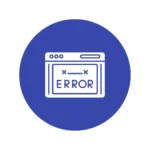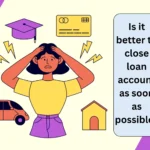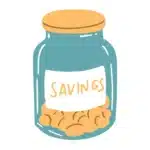Interest rates on fixed deposits have fallen significantly over the past few years. But there are still plenty of opportunities you can get out of it.
Let’s understand FDs in a simpler way and find out how much you can earn with an FD at present.
If we compare the present FD rates to the rates provided a decade ago, there’s no denying that the rates have gone down drastically.
The good news is that in the recent past, things have been quite positive, and most banks are offering attractive rates that may even go up to 8 percent per year.
Currently, if you open a fixed deposit at a bank, you will get decent maturity values. That’s for sure, as FDs are the safest mode of investment.
Now, let’s understand these FDs in brief.
Current Fixed Deposits
You may have open fixed deposits for shorter terms. It may be for as short as 7 days and it may last up to a year.
When you open these short term FD, you may not get higher interest rates. Think of it as an FD which is inclined more toward financial liquidity than a fund appreciation tool.
Current FD or Short term FD gives you high liquidity with less rate of interest. Though, it will enable you to earn higher than the savings Bank rate which is usually 2 to 3 percent.
Fixed Deposits of 1 to 10 Years
Real fixed deposits with better interest rates. You will find these FDs to have higher interest rates than the current FDs.
Technically speaking, both types of FDs have the same features and terms of uses.
You can open them online as well as offline. You can close them as and when you need them to.
Partial closure are allowed on both FDs. Personal loans are available with terms and conditions that may not be applicable to short term FDs. The rest are same.
Normally, when you open a fixed deposit in the bank, you get the option to choose how it is going to be closed.
You may advise your bank to give back the principal amount along with the interest earned, or you may opt for the auto-rolled-over facility on your FD for another term.
Either way, you can go for it and enjoy having FDs in your name.
But, have you ever thought that these fixed deposits, especially those FDs of 1 to 10 years, can be devised in such a manner that you get the monthly payments in your primary bank account.
Awesome right?
Your capital portion of the investment will stay intact till it matures, and you will keep getting the interest you have earned in your account monthly.
You may also choose the interest pay-out option of monthly, quarterly, half-yearly, or annually.
Let’s see, if we go for monthly interest on a fixed deposit, how’s it going to be?
Monthly Interest Payout on Fixed Deposits
Does a fixed deposit pay monthly interest? The answer is yes. But the calculation is based on annual interest, though you get it on a daily basis. Term deposits have the facility of these interest payouts.
Let’s see, how fixed deposit interest is paid monthly. Take ₹50 lakhs as an investment amount.
If we consider that the prevailing interest rate is 6 percent per annum and open a term deposit of 5 years. The calculation goes something like this.
- 6/100*5000000=300000
- Divide 300000 by 12 months, which is ₹25000
- If the bank is taxing you at 10 percent as TDS, then your monthly interest pay-out will go down to ₹22500
Likewise, if we calculate the monthly interest on a fixed deposit of ₹25 lakhs, you will get ₹12500 per month. If TDS is 10 percent, you would get ₹11250 as a post-taxed monthly payout.
Can You Get the Benefit on Any Fixed Deposit?
No. it’s not. Fixed deposits are classified into 2 types. One is the current deposit, and the other is the term deposit.
Current deposits are those that are opened for a short period of time. It may go from 7 days to less than 1 year. Interest payouts are not available under such a scheme.
You may get the facility only for a term deposit that runs for 1 year and above. The maximum term for which one can have a fixed deposit is 10 years.
Which bank gives monthly interest on fixed deposits? You may get this facility at any bank.
Wherever you bank, you can apply for it. But to maximize your monthly payout, you have to compare interest rates and choose the highest one.
You must have seen that even at the same bank, the interest rate of FDs differs with different tenors.
A 1-year FD may have a lower interest rate than the other longer-term FD.
Tips for Choosing the Best FD
Choosing which FD offers you better is the first thing that you must consider.
Some facts about the particular bank will easily make you able to make a swift decision.
These are a few of the things that need to be considered when choosing a fixed deposit.
- Choosing a Bank: Choosing a bank is one of the foremost items on the list. How safe your money is depends on that. So, go for banks that are identified by the regulatory body, which is Reserve Bank. These banks are known as D-SIBs (Domestic Systematically Important Banks). It is considered that these banks are too big to fail. Having FDs in these banks is totally safe and secure.
- Accessibility: Can you access your bank whenever you want. Other than business hours, see if it’s accessible online too. Accessibility is one such thing that is often neglected. When having an issue, not all telephonic conversation are satisfying. Physical presence is better sometimes.
- Interest Rates: The rate of interest is the deciding factor. When you have researched the bank and its presence, how much return you are going to get is the deciding factor. When the rate of interest is too high, it means the underlying risk is higher than its counterpart.
- Terms and Conditions: Read the terms and conditions of the bank. All banks have somewhat more or less the same terms and conditions for opening fixed deposits. You must confirm these terms and conditions. Whether you can apply for partial withdrawal of FD or what are the penalties involved when breaking out early. Nomination facility, etc.
- Offers: Offers are often neglected, but do you know that banks do offer a better rate for customers? SBI has a ‘we care’ facility for senior citizens. With it, senior people get an additional 30 basis points higher rate of interest. The condition is applicable only to those FDs of 5 years and older. Likewise, some banks offer better rates online than offline. You must check it out before the conclusion.
Downside of FD with Interest Payout
It’s helpful that you get a regular income from your fixed deposit, which take care of your financial needs.
If you have devised the facility in such a way that you get the benefit of FD monthly interest pay-out as well as your other investment is intact.
Then it’s a great plan, actually. But choosing this over other lucrative investments would not make sense.
The reason is that, when you opt for interest pay-out, there will be no compounding effect on your interest earned.
It means that your investment is limited only to the monthly income you have generated. Try mixing your investment and looking for options that you have.
Also, enjoy getting monthly income on your fixed deposit.







Your article helped me a lot, is there any more related content? Thanks!
Very well presented. Every quote was awesome and thanks for sharing the content. Keep sharing and keep motivating others.